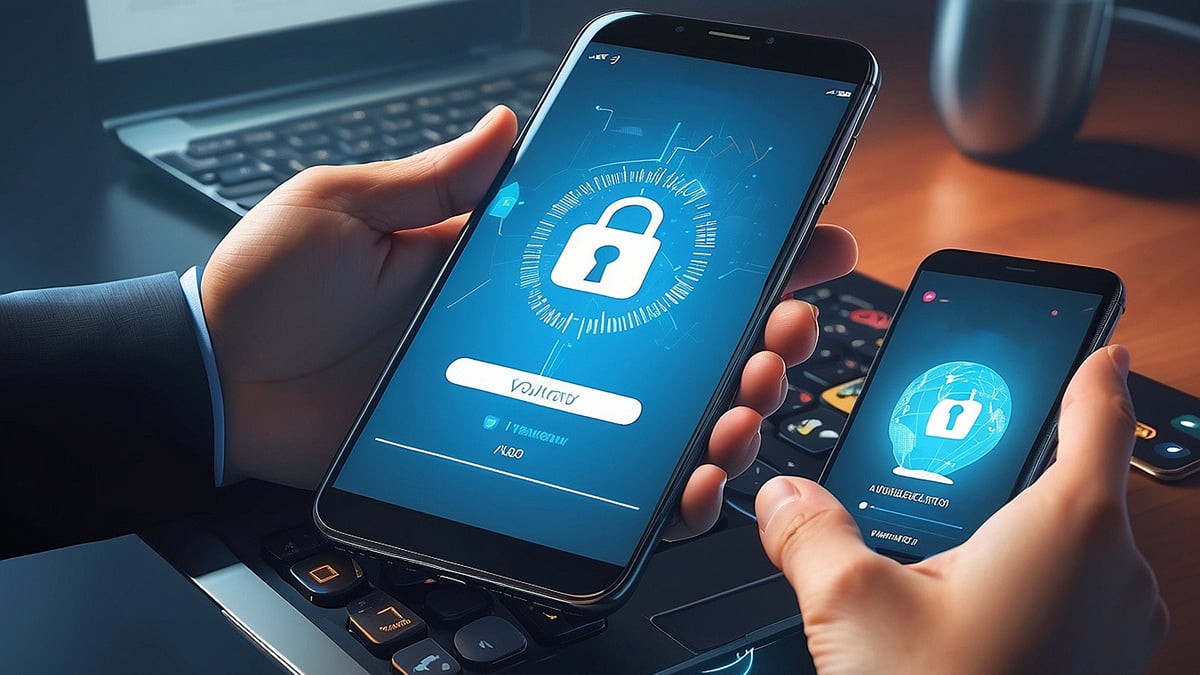
In a world of increasing cyber threats, passwords alone aren’t enough to safeguard sensitive data. Even the most complex password can be cracked, leaving your organization vulnerable. That’s why today, cybersecurity demands more robust defenses. Multi-Factor Authentication (MFA) adds an extra layer of security, ensuring only authorized individuals can access critical systems, accounts, and data. From business transactions and online payments to identity verification, MFA has become essential.
MFA Explained
As cyber crimes evolve, organizations require more than traditional security measures. MFA enhances data protection through a layered approach requiring two or more identity verification factors. Unlike single authentication methods, MFA employs multiple, distinct barriers that make unauthorized access significantly more challenging.
With organizations relying heavily on digital operations, safeguarding data has become a priority. MFA helps organizations verify users thoroughly, reducing the risk of unauthorized access. As eMudhra specializes in secure identity solutions, our MFA offerings provide enhanced protection across digital ecosystems, keeping both user and business data secure.
Why Passwords Alone Aren’t Enough
Authentication methods based solely on usernames and passwords are increasingly unreliable. Users often struggle to remember complex passwords across multiple platforms, leading them to create simpler passwords that are easier to compromise. Passwords are also vulnerable to malware, phishing, and hacking. With MFA, organizations add crucial layers of security, mitigating risks associated with password-only authentication.
Types of Authentication Factors
MFA employs various authentication factors to verify user identities. A minimum of two factors is essential for MFA, and using more than two offers even greater security. Let’s examine the different types of factors that can strengthen an organization’s MFA approach:
1. Knowledge Factors
Knowledge factors are the most familiar type of authentication and are based on information only the user should know, such as passwords, PINs, or answers to security questions. However, these are also the most vulnerable to attacks. Hackers can use phishing, brute-force attacks, or social engineering to obtain knowledge-based credentials. MFA that combines knowledge factors with other types of verification, such as possession factors, provides a stronger line of defense.
2. Possession Factors
Possession factors rely on something the user owns, such as a device or token. These factors include physical and digital security tokens:
- Software Tokens: Many MFA systems use OTPs (One-Time Passwords), which are generated by security apps and change with each login.
- Authenticator Apps: Apps like Google Authenticator create time-based one-time passwords (TOTPs) that expire quickly, making them difficult to hack.
- Push Notifications: Some systems send push notifications to the user’s device for confirmation, adding an extra layer of security.
- Hardware Tokens: Devices like USB security keys and smart cards provide physical tokens for authentication.
While possession factors improve security, they aren’t foolproof. Physical tokens can be lost or stolen, and OTPs may be vulnerable to phishing and man-in-the-middle attacks. eMudhra’s MFA solutions are built with advanced security mechanisms that mitigate these vulnerabilities, offering reliable protection for organizations.
3. Inherent Factors
Inherent factors, or biometrics, are unique to each user and include characteristics like fingerprints, facial recognition, and voice identification. Biometric factors are among the hardest to replicate, offering high security. However, in the event of a breach, biometrics are challenging to replace. With advancements in AI, hackers may attempt to create fake biometrics, but eMudhra’s secure MFA solutions use advanced algorithms to verify true user identities accurately.
4. Behavioral Factors
Behavioral factors analyze patterns like typing speed, location, and device usage to confirm the user’s identity. While behavioral factors are a more advanced approach, they’re susceptible to impersonation. eMudhra’s MFA incorporates behavioral patterns in combination with other factors, enhancing security by creating layered verification that’s harder to replicate.
Adaptive Multi-Factor Authentication
For organizations seeking flexibility, adaptive or risk-based MFA offers dynamic authentication requirements based on context and risk level. This system assesses each login attempt, adjusting challenges accordingly:
- Low-risk Access: A password may be sufficient.
- Medium-risk Access: A second factor, like OTP, is required.
- High-risk Access: In critical scenarios, a third factor, like biometric verification, is used.
eMudhra’s adaptive MFA solutions make it easier for organizations to implement variable security levels, optimizing user experience without compromising security.
Passwordless Multi-Factor Authentication
Since knowledge-based factors are more vulnerable, passwordless MFA eliminates passwords entirely, using possession and inherent factors like biometrics and device-based tokens. This approach reduces vulnerabilities associated with passwords, streamlining security while enhancing user experience. With eMudhra’s passwordless MFA, organizations can adopt modern, secure authentication that improves security without burdening users with complex passwords.
Implementing eMudhra’s MFA Solutions for Comprehensive Security
eMudhra’s Multi-Factor Authentication solutions provide robust, secure authentication tailored to your organization’s needs. Here’s how our MFA services enhance cybersecurity:
- Fine-Grained Access Control: eMudhra’s MFA ensures that only registered users can access specific databases and networks, minimizing unauthorized access risks.
- User-Friendly Authentication: Our adaptive MFA adjusts security levels based on context, allowing seamless access for verified users while maintaining rigorous protection.
- High Assurance through Biometrics and Tokenization: We offer biometric verification and secure tokenization, making eMudhra’s MFA highly effective against sophisticated cyber threats.
- Regulatory Compliance and Audit Readiness: eMudhra’s MFA is designed with compliance in mind, helping organizations meet data protection standards and pass regulatory audits with ease.
Conclusion
In today’s digital landscape, an advanced MFA solution is essential for any organization committed to security. eMudhra’s MFA solutions provide the highest level of assurance, safeguarding critical data and upholding digital integrity. Trust eMudhra to deliver the robust multi-factor authentication your organization needs to protect assets and gain stakeholder confidence.
By implementing eMudhra’s MFA solutions, you not only shield your data but also fortify your brand’s reputation as a trusted, secure organization. Contact eMudhra to learn more about how we can support your MFA requirements and keep your digital ecosystem secure.
